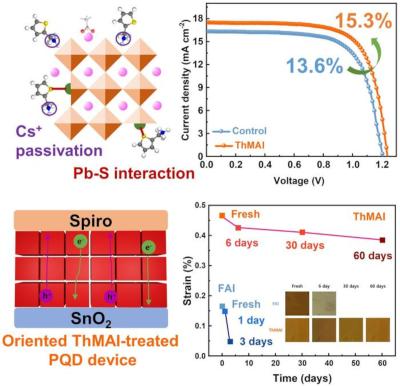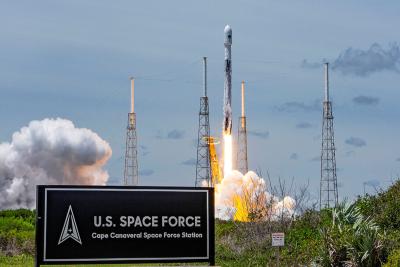New ligand exchange process enables improved perovskite quantum dots for efficient and stable solar cells
Researchers from Korea's Daegu Gyeongbuk Institute of Science and Technology (DGIST), Gyeongsang National University (GNU) and Kookmin University have developed a method to improve both the performance and the stability of solar cells using perovskite quantum dots. They developed longer-lasting solar cells by addressing the issue of distortions on the surface of quantum dots, which deteriorate the performance of solar cells.
A schematic diagram of bilateral ligand bonding on the surface of perovskite quantum dots. Image credit: Chemical Engineering Journal
Perovskite quantum dots can have excellent light-to-electricity conversion capabilities and are easy to mass-produce. However, according to the research team, in order to utilize them in solar cells, the ligands attached to the quantum dot surface must be replaced. This process often leads to distortions of the quantum dot surface, resembling crumpled paper, which results in decreased performance and shorter lifespans for the solar cells. To address this issue, the team adopted short ligands that securely hold the quantum dots from both sides, effectively uncrumpling the distorted surface. The ligands help restore the distorted lattice structure, smoothing the crumpled surface of the quantum dots. This significantly reduces surface defects, enabling the solar cells to operate more efficiently and extending their lifespan. Consequently, the power conversion efficiency of the solar cells increased from 13.6% to 15.3%, demonstrating stability by maintaining 83% of their performance for 15 days.





